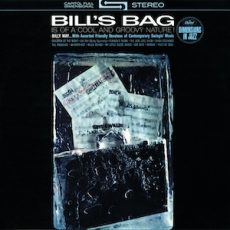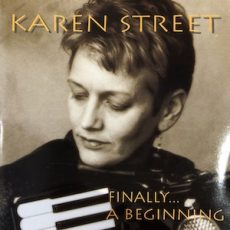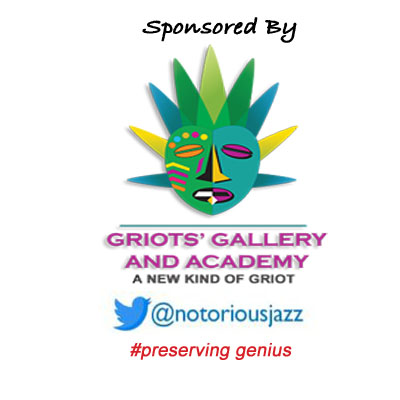
Daily Dose Of Jazz…
Raymond Michael Pizzi was born January 19, 1943 in Everett, Massachusetts. His first instrument was clarinet and he attended the Boston Conservatory and Berklee College of Music in the 1960s.
Pizzi taught in Randolph, Massachusetts public schools from 1964 to 1969 before relocating to California. In the 1970s he worked with Thad Jones and Mel Lewis, Frank Zappa, Shelly Manne, Willie Bobo, Moacir Santos, Mark Levine, and Dizzy Gillespie.
The Eighties saw him accompanying Nancy Wilson and was a sideman for Milcho Leviev and Bob Florence. He worked with the American Jazz Orchestra into the early-1990s. Ray recorded as a leader, including in a quartet called Windrider.
As an educator he joined the faculty at the Henry Mancini Institute at the University of Miami in 1997.
Saxophonist, bassoonist, and flautist Ray Pizzi, nicknamed Pizza Man, died on September 2, 2021.
More Posts: bandleader,bassoon,educator,flute,history,instrumental,jazz,music,saxophone

Daily Dose Of Jazz…
Nguyên Lê was born Le Thanh Nguyen on January 14, 1959 in Paris, France of Vietnamese ancestry. He began playing drums at the age of 15, then took up guitar & electric bass. After graduating in Visual Arts he majored in Philosophy, writing a thesis on Exoticism. A self-taught musician, Nguyên started out playing rock, funk, jazz standards, avant-garde jazz, pop, African, Caribbean, and other world music.
Devoting himself to music, in 1983 he created Ultramarine, a multi-ethnic band whose recording DÉ has been considered 1989’s Best World Music album. He went on to record several albums and worked with such musicians as Miroslav Vitous, Trilok Gurtu, J. F. Jenny Clarke, Dewey Redman, Andy Emler, Jon Christensen, Nana Vasconcelos, Glenn Ferris, Kenny Wheeler, John Taylor and numerous others.
He has played with the O. N. J., the French National Jazz Orchestra in which he played with Johnny Griffin, Louis Sclavis, Didier Lockwood, Carla Bley, Steve Swallow, Randy Brecker, Toots Thielemans, Courtney Pine, Steve Lacy, Dee Dee Bridgewater, Gil Evans, Quincy Jones, Randy Brecker, Vince Mendoza, Carla Bley, Per Mathisen, Marc Johnson, Peter Erskine, Trilok Gurtu, Paolo Fresu and Dhafer Youssef and numerous others.
He has released albums as a leader and as a sideman. His 1996 album Tales from Viêt-Nam blends jazz and traditional Vietnamese music. In spring 2011 he released Songs of Freedom, an album with cover versions of pop hits from the 1970s.
Guitarist and composer Nguyên Lê continues to perform, record and compose.
More Posts: bandleader,guitar,history,instrumental,jazz,music,synthesizer

Daily Dose Of Jazz…
Jeremy Bacon was born in New York City, New York on December 16, 1959 into a musical family that were big jazz fans. His father sang with the New York Choral Society and The Occasional Singers, an avant-garde group led by folk singer Gil Robbins. Her uncle designed album covers for Thelonious Monk, Cannonball Adderley and numerous others for Riverside Records.
Taking piano lessons as a child he went on to study in high school at the Center for Open Education and then jazz improvisation and composition at Oberlin. After college, Jeremy became the protégé of pianist Don Pullen. He worked regularly in a trio led by bassist Charles Fambrough, which rotated drummer Jeff “Tain” Watts, trumpeters Johnny Coles and Michael Philip Mossman, saxophonists Joe Ford and Ralph Bowen, and guitarist Pat Martino.
He was musical director for Joey Arias’ Billie Holiday show at Carnegie Hall and accompanied many vocalists, including Kristin Chenoweth and Jeanie Bryson, daughter of Dizzy Gillespie. He recorded two albums as a leader Cloud Hands and Cage Free: Free Range, and Travels with the band Big Train. Bacon lent his talents to three recordings with saxophonist Joey Cavaseno, and one with vocalist Queen Esther.
Having established himself on the East Coast, a move to the Pacific Northwest in 2018 opened a new audience, performing regularly as a leader and accompanist. He taught piano on the faculty of Cornish College of the Arts, accompanied dance classes in the theater department, and performed with Seattle JazzED at many regional elementary schools.
Jazz pianist Jeremy Bacon died at Franciscan Hospice House in Tacoma, Washington on July 8, 2024, after months of treatment for metastatic colon cancer. He was 64 years old.
More Posts: bandleader,history,instrumental,jazz,music,piano

Daily Dose Of Jazz…
Chuck Gentry was born Charles T. Gentry on December 14, 1911 in Belgrade, Nebraska. He learned to play clarinet while growing up in Sterling, Colorado and attended Colorado State Teachers College before moving to Los Angeles, California to pursue a career in music.
He played with Vido Musso in 1939, then with Harry James in the first years of the Forties. During World War II he worked with Benny Goodman, the Army band of Glenn Miller, and Artie Shaw. Gentry then worked with Jan Savitt before returning to Goodman’s employ in 1946.
After 1947 Chuck worked as a session musician with June Christy, Louis Armstrong, Georgie Auld, Charlie Barnet, Ralph Burns, Benny Carter, Sammy Davis Jr., Ella Fitzgerald, Pete Fountain, The Four Freshmen, Erroll Garner, Woody Herman, Stan Kenton, Spud Murphy, Anita O’Day, Patti Page, Mel Powell, Della Reese, Shorty Rogers, Pete Rugolo, Mel Torme, and Nancy Wilson.
Saxophonist Chuck Gentry died on January 1, 1988 in California.
More Posts: history,instrumental,jazz,music,saxophone

Daily Dose Of Jazz…
Karen Street was born on December 13, 1959 in the United Kingdom (UK) and started playing the accordion at the age of 7. She went on to study at Bath University, RWMCD and in London, England with the late Ivor Beynon, a pioneer of the classical accordion. She studied music at Welsh College of Music and Drama and Guildhall School of Music. She became the British Virtuoso Champion in 1981/2 and competed in the Coupe Mondiale World Championship in Hamburg, Germany and Folkstone, UK.
Karen has created a niche for herself in the UK jazz scene and is a regular member of Mike Westbrook’s groups, works with Tim Garland as well as part of Lammas playing alongside Geoff Keezer, Joe Locke and Avishai Cohen.
As a saxophonist Street was a member of the all girl saxophone quartet The Fairer Sax and is now a member and co-leader of Saxtet with her husband Andy Tweed.
Karen’s composing is specialized by writing music for the saxophone, from solos to large ensembles. Her composition for solo accordion, In The Ballroom With The Rope, took first prize at the London Accordion Festival, Composition Competition in 2001. The same year she released her debut recording, Finally A Beginning.
Besides jazz, Karen has played across genres with the likes of Bryan Ferry, Grace Jones, Andrea Bocelli, Kate Westbrook, BBC Philharmonic, Icebreaker, and the Strictly Come Dancing Live Tour band for three seasons.
Accordionist, saxophonist and flutist Karen Street is currently a freelance musician playing across a wide variety of genres.
More Posts: accordion,flute,history,instrumental,jazz,music,saxophone



